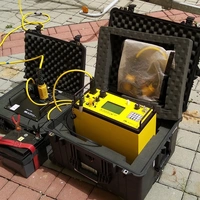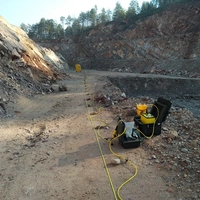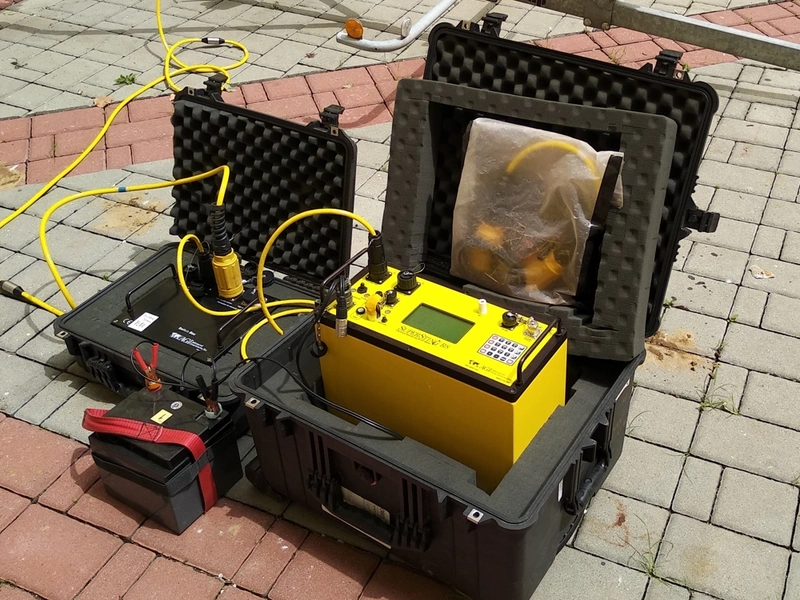Aparatura do pomiarów geoelektrycznych SuperSting R8
Aparatura SuperSting R8 jest nowoczesnym systemem pomiarowym służącym do obrazowania ośrodka geologicznego z wykorzystaniem następujących metod geoelektrycznych: elektrooporowa (DC), potencjałów naturalnych (SP) oraz polaryzacji wzbudzonej (IP). W ramach metody elektrooporowej możliwe jest wykonywanie pomiarów metodami: sondowania elektrooporowego (VES), profilowania elektrooporowego i tomografii elektrooporowej (ERT). System pomiarowy pozwala na wykorzystanie szeregu standardowych układów pomiarowych (np. Wenner, Schlumberger, Dipole-dipole, Pole-dipole, Gradient) oraz układów nietypowych, tj. dowolnie programowalnych przez użytkownika. Aparatura pozwala na wykonywanie pomiarów w trybie 8-kanałowym, tj. możliwe jest jednoczesne zmierzenie różnic potencjałów dla ośmiu odrębnych par elektrod przy jednokrotnym przepuszczeniu prądu elektrycznego przez badany ośrodek.
Udostępnienie aparatury wymaga zgody kierownika katedry. Udostępnianie odbywa się na zasadzie współpracy lub odpłatnie, w ramach zleceń komercyjnych.
- Wspomaganie badań w zakresie geologii-inżynierskiej i geotechniki.
- Badania strefy przypowierzchniowej dla potrzeb ochrony środowiska gruntowo-wodnego i dla archeologii.
- Badania dla potrzeb rozpoznawania złóż surowców skalnych.
- Badania zapór, obwałowań i innych konstrukcji inżynierskich.
- Badania z użyciem specjalistycznych kabli podwodnych.
- Badania deformacji terenu na obszarach górniczych.
Aparatura SuperSting R8 pozwala na wykonywanie pomiarów w technice 1D, 2D i 3D, a także w wariancie monitoringu geoelektrycznego (4D). Posiadany wariant sprzętowy pozwala na jednoczesne podłączenie zestawu 112 elektrod i maksymalnym ich rozstawie (odległości pomiędzy sąsiadującymi elektrodami) równym 5 m. Długość profilu badawczego nie jest ograniczona jedynie do zestawu elektrod - dzięki zastosowaniu techniki roll-along może być odpowiednio powiększana.




Jednostka odpowiedzialna
Grupa / laboratorium / zespół
Laboratoria metod geofizycznych / Laboratorium mobilne / Laboratorium Badań Geoelektrycznych